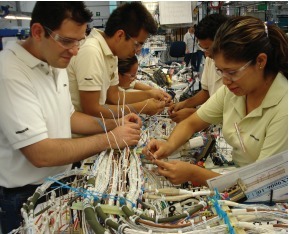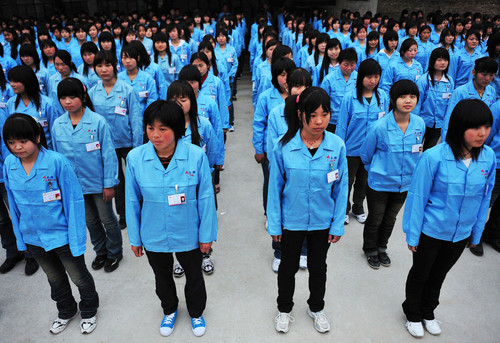Oct 21 2013
Bombardier receives award from the AME | ept
See on Scoop.it – lean manufacturing

When evaluating Bombardier’s Toronto site, the AME assessment team was impressed by the use of improvement tools, especially with regards to the organization’s approach to Standardized Problem Solving and an empowerment system called Xcell. Combined, these processes drive continuous improvement and engagement by the workforce down to the shop-floor level. Equally impressive to the team was the level of accountability at Bombardier’s Toronto Site and an understanding that the entire organization must change to meet evolving demands and new visions.”
According to this article, the AME recognized Bombardier as having implemented Lean Manufacturing on the basis of having Standardized Problem Solving and an individual suggestion system called Xcell.
Is that it? I have to assume that Bombardier has done a few other things to improve quality, productivity, delivery, safety, and morale, including perhaps designing production lines for flow, reducing setup times, implementing a pull system with heijunka, mistake-proofing manual operations, setting up work teams with job rotations, …
What did they actually do and how well did it work? The article does not say.
See on www.ept.ca










Oct 22 2013
Employees are Colleagues, Not Assets | Eric Bigelow | IndustryWeek
See on Scoop.it – lean manufacturing
“A lot of organizations claim that employees are their greatest assets. To many this seems like a very profound way to view the employees. I disagree. I think that this terminology can be very harmful to organizational culture.
The word asset means ‘anything tangible or intangible that is capable of being owned or controlled to produce value.'”
This is a point I have grown tired of making in vain. Assets are things you own and, unless they are slaves, you don’t own the people who work for you. Saying “People are our greatest assets,” is not only inaccurate and distasteful, it also suggests that you want to have as many assets as you can.
In private life, it may be true: the more you own, presumably, the better off you are. Business, however, is different: you want to generate income with as few assets as you can get away with. That’s why you monitor ratios like “Return on Assets.”
Assets and liabilities are mistakenly viewed as positives and negatives. They are in fact technical terms from accounting to designate respectively what you own and what you owe. Whether you like it or not, you own excess inventory, and it is an asset you would rather not have. A 0% long-term loan, on the other hand, is a liability you are happy to have.
In and of themselves, employees are neither assets nor liabilities. On the balance sheet, what the company owes them in benefits appears in the Liabilities column. So does the shareholders’ equity. There should be no value judgement attached to terms like Asset or Liability.
See on www.industryweek.com
Share this:
Like this:
By Michel Baudin • Management 1 • Tags: asset, liability, Management